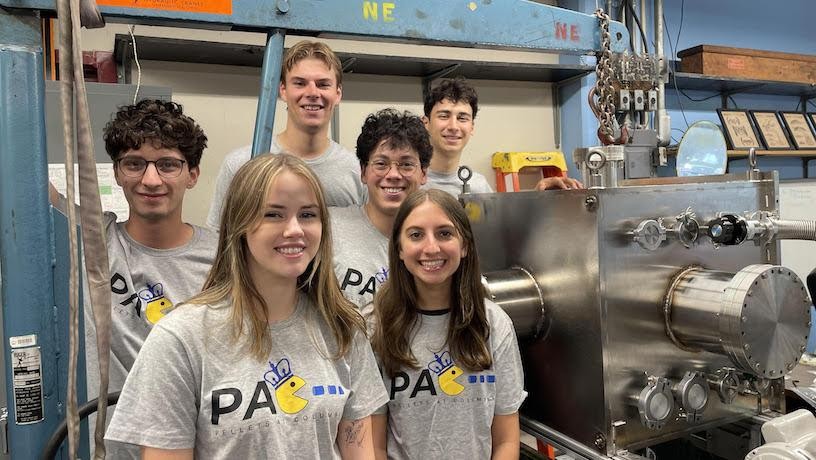Columbia Engineering undergraduates lead a team to quantify the interaction of cryogenic ice pellets with energetic particle beams to better understand their behavior in fusion plasmas.

The U.S. Department of Energy has awarded a grant to an undergraduate student team led by the lab of Carlos Paz-Soldan, associate professor of applied physics and applied mathematics at Columbia Engineering, together with Oak Ridge National Laboratory, to establish the “Pellets at Columbia” project. The experiment is designed to advance critical supporting technologies for future fusion pilot plants that will provide clean, safe, and cheap power to the grid.
The idea is that these plants will use the same fusion reaction that fuels the sun. But such fusion reactions require extremely high temperatures–in excess of 100 million degrees Celsius–where the fuel is in a plasma (a very high energy gas) state and must be confined using magnetic fields. In case of an unexpected event, researchers must quickly shut down the high-temperature plasma by injecting small, cryogenically frozen cylinders called “pellets” that are made of a variety of hydrogen isotopes and other gasses such as neon or argon.
The injection of solid pellet material into the fusion plasma enables researchers to deposit ions deep inside the device. This deposition occurs through a process called ablation, in which layers of atoms are vaporized from the outer surface of the pellet and then ionized due to the high temperatures. The research team plans to directly measure the ablation of various pellet types to validate and improve current computational ablation models.
The researchers are a group of undergraduates from applied physics, applied mathematics, and mechanical engineering. They have conceptualized, designed, and begun to assemble the project in Paz-Soldan’s lab. They plan to run a series of experiments designed to learn more about the interactions of pellets with highly energetic plasma particles.
“I’m thrilled the students have put this project together from the ground up,” said Paz-Soldan. “The students are responsible for all subsystems of the experiment: the control system for making pellets, the measurement tools, the cryogenics, everything. They will be putting together the setup this year and we look forward to our first pellet measurements in the spring.”
The experiment is under construction in the Plasma Physics Laboratory at Columbia University, with some components provided by Oak Ridge National Laboratory. The system consists of vacuum chambers, cryogenics to freeze the gas, and high-voltage equipment for the particle beams. The students expect to have it up and running near the end of the academic year. Throughout this time, Oak Ridge will be providing equipment and the necessary expertise for operation and optimization of the test stand.
“My classmates and I are extremely grateful for the opportunity to work on a brand new experiment,” said Sebastian Gomez, a senior applied physics student. “We’re glad that we can put our diverse skill set to the test and contribute to the broader fusion energy community.”
For more information on the Columbia plasma physics program, please visit: https://plasma.apam.columbia.edu